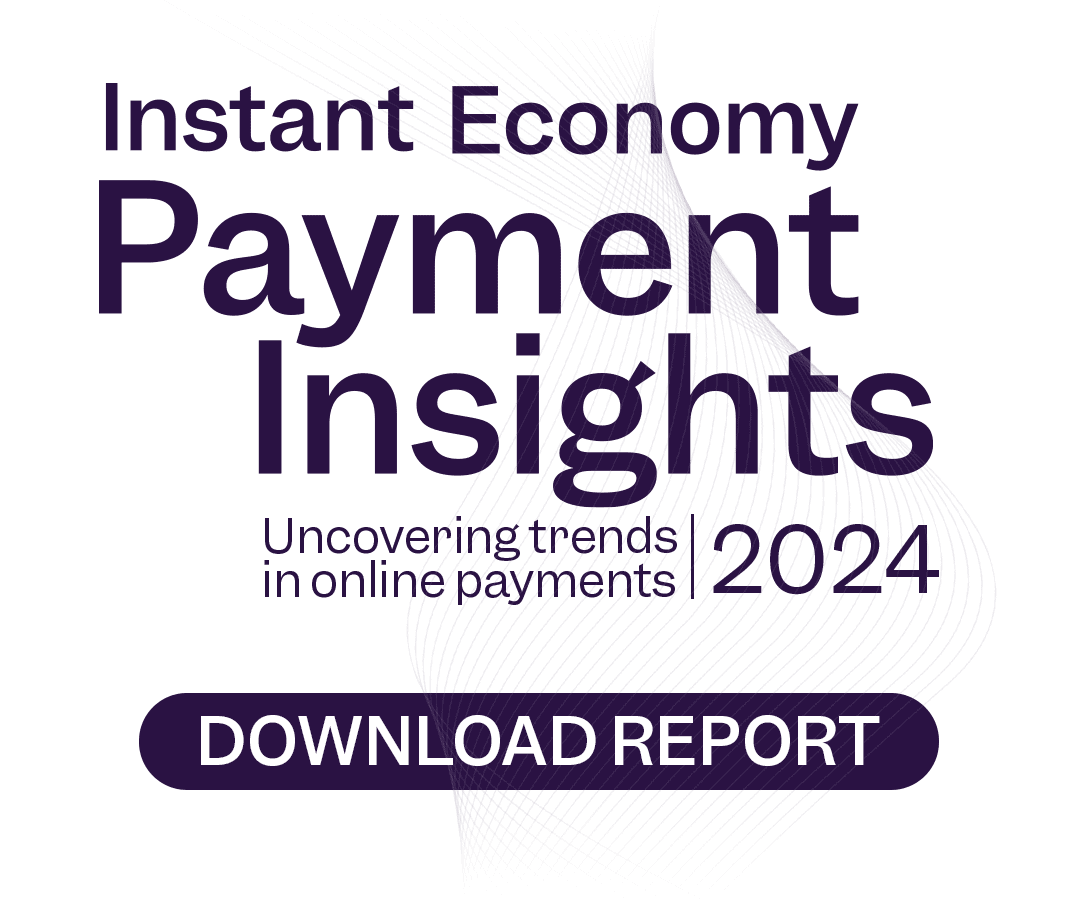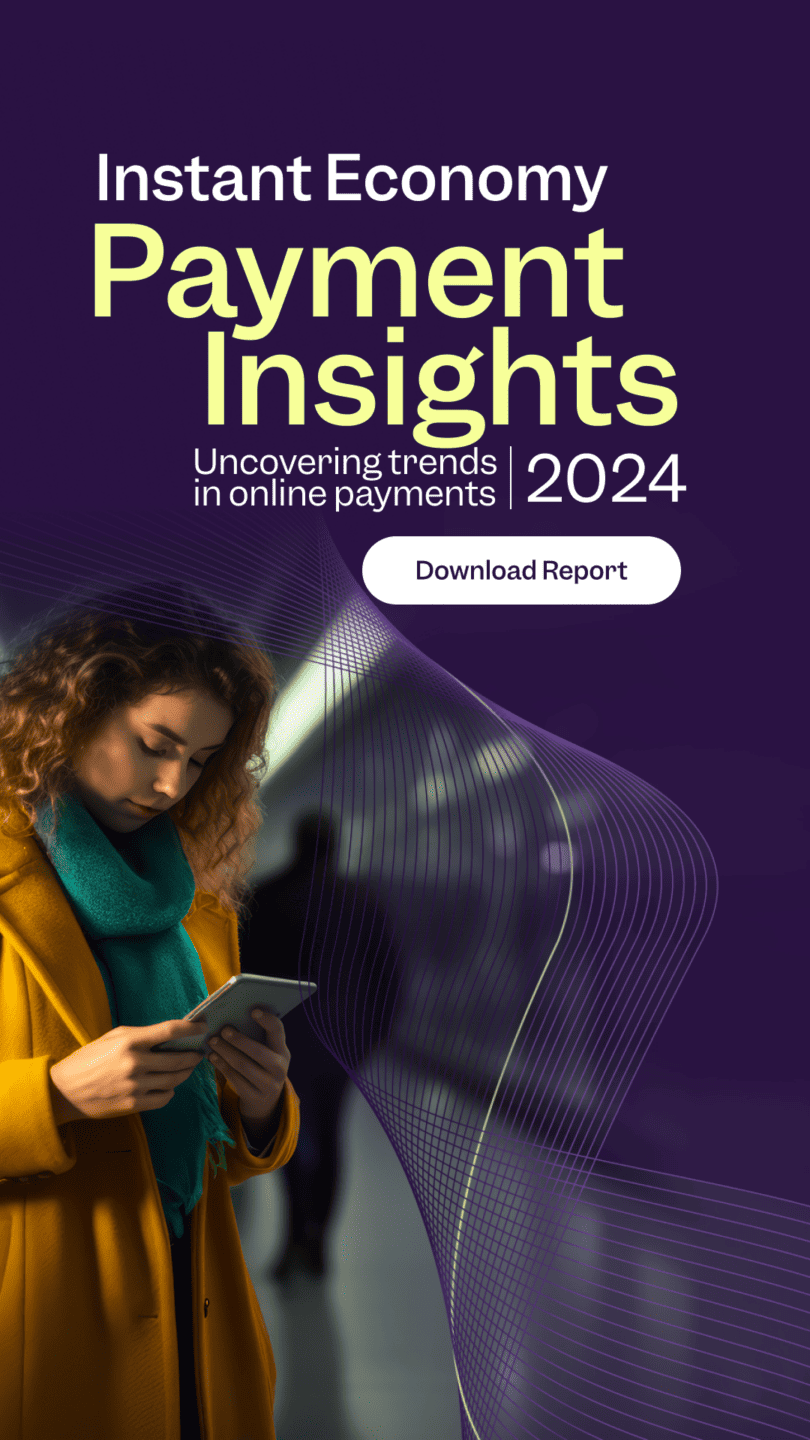
Customer loyalty is facing a squeeze, with every industry from financial services to the retail sector facing shocks to their typical customer lifecycle. In turn, a new era of digital consumer behaviours is on the rise, driven by a combination of high interest rates and new technologies.
To help you prepare, we’re looking at the next generation of consumer trends in the instant economy – focusing on online payments and consumer payment preferences. Read on to learn more and see how your business can best appeal to today’s online consumers. We will explore the following topics:
In brief: What is the ‘instant economy’?
6 ways consumer expectations are changing amid the instant economy:
- The payment services hierarchy
- The ‘buy curious’ customer
- How consumer trends differ across generations
- Richer, more personalised customer journeys
- Fickle digital consumer behaviours
- The implications for B2B markets


In brief: What is the ‘instant economy’?
The instant economy is customers transacting in mere seconds; buying and selling products or services instantly while receiving real-time updates at every stage.
Naturally, the instant economy relies heavily on technology to deliver this high level of customer service. Namely, deep and scalable digital integrations across departments to deliver the level of service customers now demand. Yet, this same service benchmark is steadily rising as new digital consumer behaviours reshape and redefine the future of modern consumer trends within online payments.
6 ways consumer expectations are changing amid the instant economy
Together with YouGov, Brite surveyed six key European markets during January 2024, amassing nearly 8,500 respondents – focusing on how consumer attitudes to online payment methods are changing.
Below are snippets of these findings, complete with similar industry research on consumer trends towards payments, customer experience (CX), and more:
1. The payment services hierarchy
Our survey revealed that security is the most important factor across most digital consumer behaviours. More specifically, consumers look for security, convenience, and speed above all else within online payments. While this isn’t exactly a revelation, these three aspects outcompeted other considerations that brands often pride themselves on, including consumer trust, habit, and support.
Similar research by Salesforce found that 79% of customers are increasingly protective over their personal data, with 71% stating that they’d trust a company only if it clearly explains its use cases and protections over personal data.
2. The ‘buy curious’ customer
Payment preferences in Europe are highly varied and even more dynamic. For example, across the six markets we surveyed, we uncovered a wealth of information regarding preferred and commonly used payment methods, including debit and credit cards, Buy Now Pay Later (BNPL), Pay by Bank, and more.
Of most interest was that a healthy portion of consumers are either willing or very willing to try a new payment method, with those from Spain and the Netherlands particularly keen. These findings are also apparent in Worldpay’s 2023 Global Payment Report, with consumers increasingly adopting alternative payment methods over more traditional card-based rails.
3. How consumer trends differ across generations
Digital consumer behaviours aren’t consistent across age groups. Rather, each demographic has its own unique priorities and preferences. For example, older generations typically prefer ease of use (59% for customers 60+ versus 49% in the 18-29 group).
By contrast, Generation Z and early-Millennial consumers (18-29) like to see anonymity and customer support options more than any other age group. Meanwhile, customers aged 30-39 like deferred payment options to better control their cash flow according to Brite’s Instant Economy report.
4. Richer, more personalised customer journeys
Previous forecasts suggested that global investments in digital transformation would reach $3.4 trillion by 2026. However, these figures were before the boom in Generative AI. As such, we’ll likely see even more investment in new tools and technologies, allowing businesses to adapt to the digital consumer behaviours of tomorrow.
Regardless of the exact investment figure, it’s important to know what to aim for. Here, Salesforce data shows a staggering gap in consumer expectations versus their true experience. Namely, 79% of customers expect consistent interactions across departments, with 55% of them reporting that they feel like they’re “communicating with separate departments” and 56% saying they often have to repeat or re-explain information.
5. Fickle digital consumer behaviours
Research by Baymard Institute found that over 70% of shopping carts online are abandoned, while customers are most fickle when buying luxury goods and home furnishings. Within Brite’s research, the most significant issue in our research was that the hassle of creating an account for payment puts customers off.
Creating accounts, using apps, going through complex steps, and forgetting passwords are all major turn-offs and important consumer trends to note. In addition, Brite’s data found that needing to use an app to make a payment regularly affects up to 1 in 5 online shoppers across all our markets surveyed. Therefore, to avoid losing customers and stay competitive within payment methods in the instant economy, the key to success is facilitating a smooth and simple payment process.
6. Changing payment Preferences
One of the most important aspects of changing consumer behaviour is the payment preferences of consumers in the instant economy. Brite’s Instant Economy report found that while payment preferences varied in usage across different markets, the most frequently used payment method was debit cards, followed by Pay by Bank and digital wallet payment options.
Despite credit cards having a circa 50-year lead, both Pay by Bank and digital wallets have become the second and third most commonly used payment method amongst consumers, especially those from Generation Z.
According to Brite’s research data, younger generations of consumers are more willing to try a new payment method, with 50% of those surveyed in Spain highlighting that they would be keen to try an alternative payment method. As such, merchants should be flexible when providing payment options to ensure that they can cater to changing consumer payment preferences.
Discover the future of consumer trends in our latest report
Merchants and service providers have an exciting opportunity to capitalise on these latest consumer trends and online payment method shifts. Indeed, in order to better attract and retain today’s customers focusing on a few factors, such as streamlining checkout processes and providing consumers with the best payment experience and payment mix are good consumer trends to follow.
However, there’s more to these next-gen digital consumer behaviours. Our latest Instant Economy Payment Insights report goes in-depth on payment methods in the instant economy and shares never-before-seen insights from six key European markets, including the UK, France, and Germany.
Get your free copy today to find out more and get your payment options ready for the months ahead:

